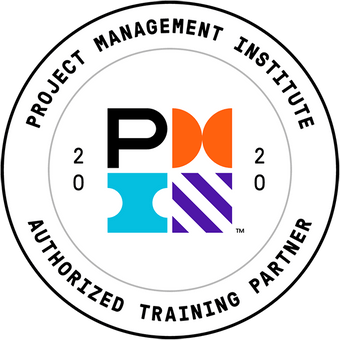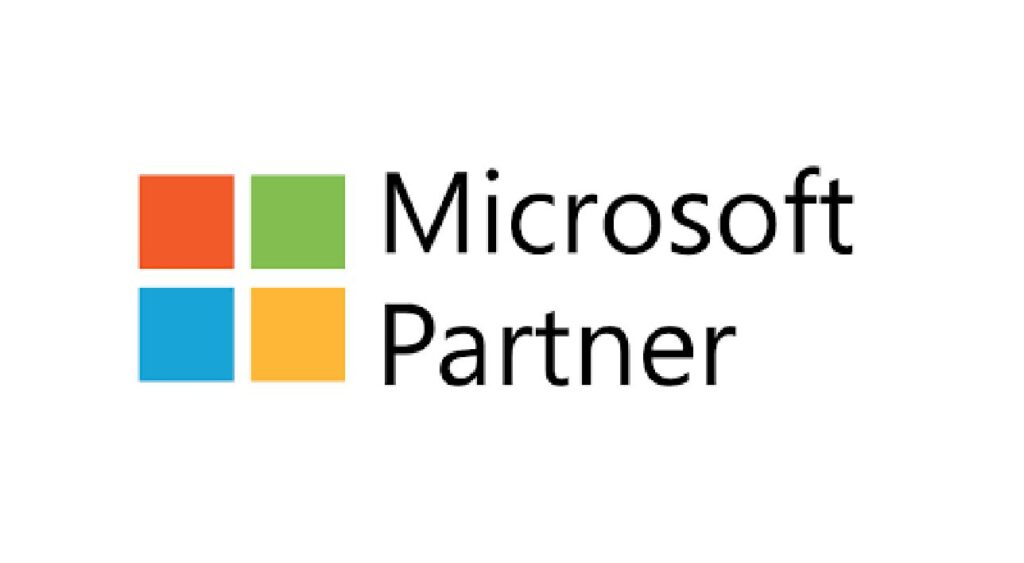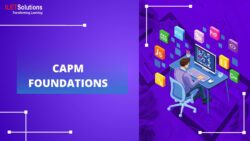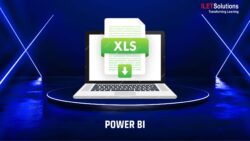The skills you learn in this course can help enhance your value to current and future employers, serve as a stepping stone in your project management career, and give you the confidence and knowledge you need to work more efficiently as part of a project team.
If your goal is to become a Certified Associate in Project Management, this course is a great starting point. Once you have mastered the tools and techniques in this Foundations course, we recommend taking the CAMP Certification Training course, which is specifically focused on CAPM exam topics. This powerful duo will give you the knowledge required to pass your exam with flying colors. This course provides 28 project management education hours or PDUs to maintain your certification.
In this course, you will learn:
- The principles and tools normally used when planning a project.
- The best practices for execution and control of your project plan.
- The elements of a project risk management plan including risk analysis and risk response.
- The agile and adaptive approaches in project management used to manage uncertainty.
- How to integrate the activities of project team members across all knowledge areas and project phases.
- When tailoring is required to project deliverables, timing and resources and how this will affect the project scope or quality.
- How continuous improvement affects project management today.
Once enrolled, our friendly support team is here to help with any course-related inquiries.
Summary
- Skill level: Beginner
- Lessons: 40
- Video duration: 5h 06m
- Certificate: Yes
- Pre-requisites: None
- Estimated study time: 28h for all materials
Features
Premium video tutorials
Personalized Learning
Learn at your own pace
Tests and Quizzes
Award winning instructors
Get Certified
Mobile - Learn on the go
Regularly updated content
Accreditations & Approvals
All courses under each learning path are accredited and approved by one or more of the following bodies as is applicable.



Instructors
All courses are taught by reputed trainers with relevant accreditations and industry experience.
Modules
Triple Constraint
Understand the inter-relationship between the triple constraints on a project of scope, schedule, and resources.
Circles of Project Management
Circles of project management are a framework for considering different project management aspects. Based upon project and organizational considerations, some aspects may be emphasized and others de-emphasized.
Project Leader
Know the role and responsibilities of the project leader.
Core Team
Most large projects are managed by a cross-functional core team. Core team members have a dual responsibility; they are responsible for the project achieving its goals and they are responsible to ensure that the project complies with their function’s standards and best practices.
Project Lifecycle
Understand the phases of a project lifecycle and know how to approach a predictive project versus an adaptive project.
Project, Program, Portfolio, Operations
Portfolios are often comprised of programs which are often comprised of projects; all of which either create or support operations.
In-Frame and Out-of-Frame
In-Frame/Out-of-Frame is a technique for clarifying project boundaries by listing the activities and deliverables that are in scope for the project as well as the activities that are not required as part of the project.
Project Charter
The Project Charter is the document that approves the initiation of the project and identifies goals, objectives, boundaries and constraints.
Phases
Projects are often organized into phases. Phases provide structure and logic to the project and aid the project team and management to track progress.
Progressive Elaboration
Progressive elaboration is the principle of steadily adding detail to the project plan as more information becomes available.
Baseline Plan
The integrated project plan that includes scope, schedule, and resource information for all aspects of the project is the project baseline plan.
Change Planning
The unique nature of projects leads to an inherent level of uncertainty. Project managers should expect and plan for project change.
Integration and the Project Manager
A critical role of the project manager is to integrate the activities of the project team members across all knowledge areas and throughout the project phases. The Project Manager is the only individual who has that scope of responsibility
Adaptive and Agile Approaches
Many projects are initiated with significant aspects of uncertainty. The adaptive approach is ideally suited to manage uncertainty during the project and the Agile methodology is the most common adaptive approach in use.
Tailoring Scope and Quality
Traditional projects often require tailoring during planning and adaptive projects require tailoring throughout the life of the project. When tailoring is required with respect to the deliverables, it will affect the project scope or quality.
Tailoring Schedule and Resources
Traditional projects often require tailoring during planning and adaptive projects require tailoring throughout the life of the project. The tailoring is often with respect to the timing of project events or the resources – both internal and external – assigned to complete those events.
Deliverables Deployment
Learn how to identify project tasks and activities using the deliverables deployment technique.
Scope Statement
The project scope statement is a summary description of the project scope used to maintain alignment between stakeholders and team members.
WBS Dictionary
The WBS Dictionary is a table or spreadsheet that is organized by project task and contains all project planning details.
WBS Structure
The Work Breakdown Structure (WBS) is the most commonly used technique for organizing the project scope. The WBS decomposes the scope into tasks and organizes the tasks into logical groupings.
Network Diagram
A network diagram is a project scheduling technique that shows the relationship between tasks by depicting project activities as a flowchart.
Critical Path
Critical Path is a project scheduling technique that determines the shortest time that the current project plan can be completed.
Project Budget
Understand what is normally shown in a project budget. Learn how to create a time-phased project budget.
Resource List
The project Resource List is a list of all individuals working on the project with their contact information and all special equipment and facilities required to accomplish project tasks.
Responsibility Matrix
The Responsibility Matrix is a project management tool for correlating project work assignments with project team members.
Contractor Vendor Planning
Contractors, vendors, and suppliers are used on projects to reduce risks. These external resources have capacity and capability that allows them to complete project tasks better than internal resources would be able to complete them.
Resource Over-Allocation
Project resource demands are often inconsistent throughout the life of the project leading to times when resources are over-allocated.
Earned Value Planning
Earned Value Management is a comprehensive project management technique that combines scope, schedule and resource management into one set of measures. It starts with task level planning.
Estimating Uncertainty
Project plans are built with an accumulation of estimates, each of which has a level of uncertainty associated with it. The level of uncertainty is a major contributor to the accuracy of the plan and the amount of project risk.
Time-Box Estimating
Time Boxes are an estimating technique that sets a finite time for a task or task group. The amount of scope that is completed is variable. Whatever scope is done when the time box ends is the amount of scope for that activity on the project.
Positive and Negative Risk
Understand the difference between positive and negative risk. Learn the major steps of project risk management.
Risk Register
The Risk Register is a table that tracks the project risk management activities.
Risk Matrix
All project risks are not equal in their effect on a project. Project risks that have been identified are prioritized using qualitative techniques such as the Risk Matrix.
Negative Risk Response
Negative Risk Response is determining what actions the project will take to address risk threats.
Positive Risk Response
Positive Risk Response is determining what actions the project will take to address risk opportunities.
Contingencies and Triggers
Contingencies are potential risk response actions that will only be implemented if some triggering event or condition has shown that the risk probability has gone from unlikely to likely.
Team Building
Learn the characteristics of a project core team and understand the stages of a team building lifecycle.
Project Decision-Making
Project Decision Making is the process whereby the project leader and project team decide upon project strategy, tactics, and acceptable actions. For Project Stakeholders, the decisions normally concern project boundaries. For Project Core Team members, the decisions normally concern project plans and execution.
Team Meetings
Team Meetings are a gathering of team members to discuss aspects of the project. Team pulse meetings focus on status. Team problem solving meetings focus on problem resolution.
Task Accountability
Task Accountability is the project management activity associated with ensuring successful completion of project activities.
Quality Control & Quality Assurance
Quality Control and Quality Assurance are processes used for managing the project. Quality Control determines if the overall project result meets the requirements and Quality Assurance determines if appropriate standards and procedures are used to do the work of the project.
Contractors and Vendors Execution
Contractors and vendors are often used to accomplish project tasks. The complexity, uniqueness, and uncertainty of the activity will determine the nature of the relationship between the project team and the contractor or vendor.
Communication Management
Understand the characteristics of the major categories of project communication. Know the communication constraints typically encountered on project.
PMIS and Project Management Software
The Project Management Information System (PMIS) is the method that the project manager and core team use to share and disseminate project information. It often is based upon the use of a project management software application.
Setting Earned Value
Earned Value Management is a comprehensive project management technique that combines scope, schedule and resource management into one set of measures. An element, in fact the element that provides the name of the technique, is the setting of Earned Value.
Continuous Improvement
With the speed of change in business today, project management must be continually improving to stay practical and relevant. This includes both correcting problems and adopting new approaches.
Dashboards
Learn how to create and use a project dashboard to communicate project status with both management and your project team.
Management Reviews
Understand the purpose of a project management review and learn how to prepare for one.
Scope Creep
Scope creep is the uncontrolled expansion to project scope without adjustments to time, cost, and resources.
Issue Resolution
Issues are any request, complaint, or unexpected condition that leads to unplanned, but in scope, work that must be accomplished on a project. They normally result in the need to implement a workaround in order to resolve them.
Project Change
A formal documented process for changing the project baseline.
Variance Analysis
Variance occurs when the actual situation is different from the planned or expected situation. In projects, variance analysis applies to schedule variance and cost variance. It determines both why the actual situation is different than what was planned and the impact that will have on the project.
Forecasting
Since projects seldom go exactly as planned, part way through a project the project team is typically asked to estimate how much time and money are required to complete the project.
Stakeholder Acceptance
Understand how to gain stakeholder acceptance during project closeout and learn how to create and use a Punch List.
Lessons Learned
Lessons Learned are a retrospective look at a project, or phase of a project, to identify best practices to be repeated and performance gaps to be improved.
Administrative Closeout
In addition to transitioning the result of the project into the organization’s operations, projects often have accounts, systems, and resources that must be closed or disposed of before the project is fully closed.
Target Audience
- Graduates exploring placement in the entry-level Project Management positions across industries
- Professionals needing upskilling to be future-ready or become more productive in their current roles
- Experienced individuals exploring CAPM Foundations
How do I Access The Program
- Buy the course online
- Save your payment transaction receipt for any future reference
- Our team will share the credentials to enable you access your course online within 2 business days of payment transfer
Bulk Orders
Incase you are looking for bulk user licenses, or customized Learning Paths for various Job Roles, reach out to us with your detailed requirements.






Reviews
There are no reviews yet.